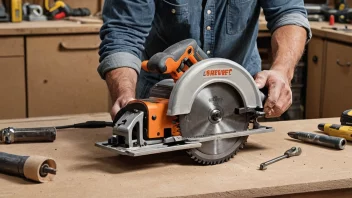The miter saw is an essential tool for any DIY enthusiast or professional woodworker, providing precision cuts at various angles to help create stunning projects. Whether you’re building furniture, framing a house, or tackling a home improvement task, knowing how to use a miter saw effectively can significantly enhance the quality of your work. In this article, we’ll explore practical tips and techniques to help you master the miter saw like a pro.
First, understanding the parts of your miter saw is crucial. Familiarize yourself with the blade, the fence, the table, and the miter and bevel adjustments. This knowledge not only aids in setup but also ensures safety while operating the tool. Always wear protective gear, such as safety glasses and hearing protection, to keep yourself safe while using the saw.
Next, setting the saw correctly is key to achieving accurate cuts. Begin by adjusting the miter angle to the desired degree. Most miter saws have a scale that indicates common angles like 0°, 45°, and 90°. For more precise cuts, use a protractor or angle finder to ensure accuracy. Don’t forget to double-check your measurements before making any cuts, as a small error can lead to wasted material.
When it comes to cutting, proper technique can make all the difference. Always ensure that your material is firmly against the fence and supported adequately. Use clamps if necessary to keep your workpiece steady. As you lower the blade, maintain a firm grip on the handle and allow the saw’s motor to do the work—never force the blade through the material. Let the blade reach full speed before making contact with the wood for cleaner cuts.
Maintenance of your miter saw is also vital for longevity and performance. Regularly check the blade for dullness and replace it when necessary. A sharp blade not only cuts more efficiently but also reduces the risk of kickback. Additionally, keep the saw clean from wood dust and debris to ensure smooth operation.
Lastly, practice makes perfect. Start with scrap wood to hone your skills and become comfortable with the saw’s operation. Experiment with different angles and types of cuts, such as crosscuts and bevel cuts, to broaden your expertise.
In conclusion, using a miter saw like a pro requires knowledge, practice, and attention to detail. By understanding your tool, setting it up correctly, employing the right cutting techniques, maintaining it regularly, and practicing, you can achieve professional-quality results in all your woodworking projects. Embrace the learning curve, and soon you’ll be cutting with confidence and precision.






